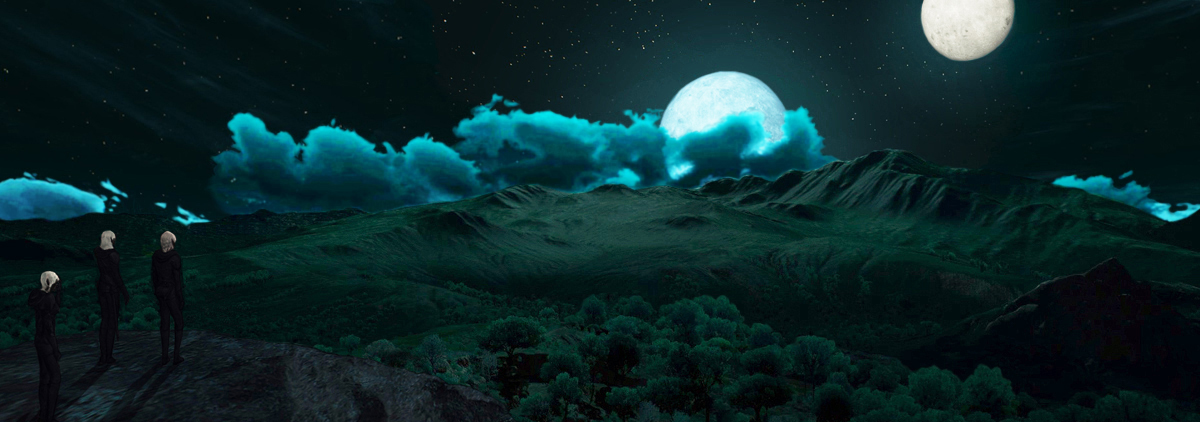Gebharik
Also known as: the Forestback Beetle, the Moving Grove
This is one of the largest land creatures of the Greylands at an average of eighty feet in length, yet strangely it is rarely glimpsed on the move. The Gebharik moves primarily during the infrequent rains of the inlands where they slowly trundle forward, digging their massive front claws and their tusked and horned visages into the mud, presumably after some form of sustenance.
During the normally dry and dusty times, a Gebharik will burrow partially into the soil and hibernate and are able to maintain such states seemingly indefinitely. Very few inhabitants of the Greylands have ever observed this megafauna's full lifecycle. While often referred to as “beetles,” the creatures share more characteristics with mollusks.
The Gebharik received the names of “forestback” or “moving grove” due to the large number of plants and smaller animals that make their homes on the large back shells. Gebharik excrete excess water and waste through their shell, building up a layer of fertile soil which provides ample sources of nutrients for a variety of plants and fungi to grow, effectively camouflaging the forestback while hibernating. Many a traveler has passed or rested on one or more Gebharik without realizing this “landmark” will eventually shift its location on its own.
Gebharik have no known predators as their flesh is fairly toxic and foul-tasting, assuming one could even break through their defenses. Because of this, despite their fearsome appearance, the Gebharik are incredibly docile compared to most creatures in the Greylands. At worst they would crush someone underfoot without noticing.
Attempts to domesticate them have failed as they are not disposed to move save when feeding or heading to fresh feeding grounds, and they are too oblivious to pain to be goaded into action. Their size makes killing a Gebharik a colossal feat and in spite of past hopes to use their thick shells as armor or building material, the shells are reported to become incredibly brittle and prone to shattering once removed.
Some scholars surmise that the various head designs of a Gebharik may indicate different subspecies or even gender, but as with much of their lifecycle, this remains up for debate. They don't appear to fight over territory and are often seen moving in relatively large herds. The best use and reward for tracking the Gebharik is that they are the best indication of a coming rainfall, and a source of other useful animals or plants.
Rumors, of course, persist that a Gebharik during droughts will search for any form of water, mashing some helpless traveler and sucking the moisture from them, leaving dried husks behind. There has been absolutely no evidence to back up these claims and other records imply Gebharik don't appear to be inclined to drinking spilled blood—a more common occurrence near a moving grove. Due to their long hibernations, it is also possible there hasn't been a drought long enough to make a Gebharik so desperate.
Some Gebharik can garner small, albeit temporary, communities of sentient beings on their backs. The Umbaldes, for example, are known to carve decorative sigils into the horns of Gebharik and seem to worship the beasts as symbols of life. See The Mysterious Umbaldes for further notations on the religious practices and other habits of this Greylands species.



